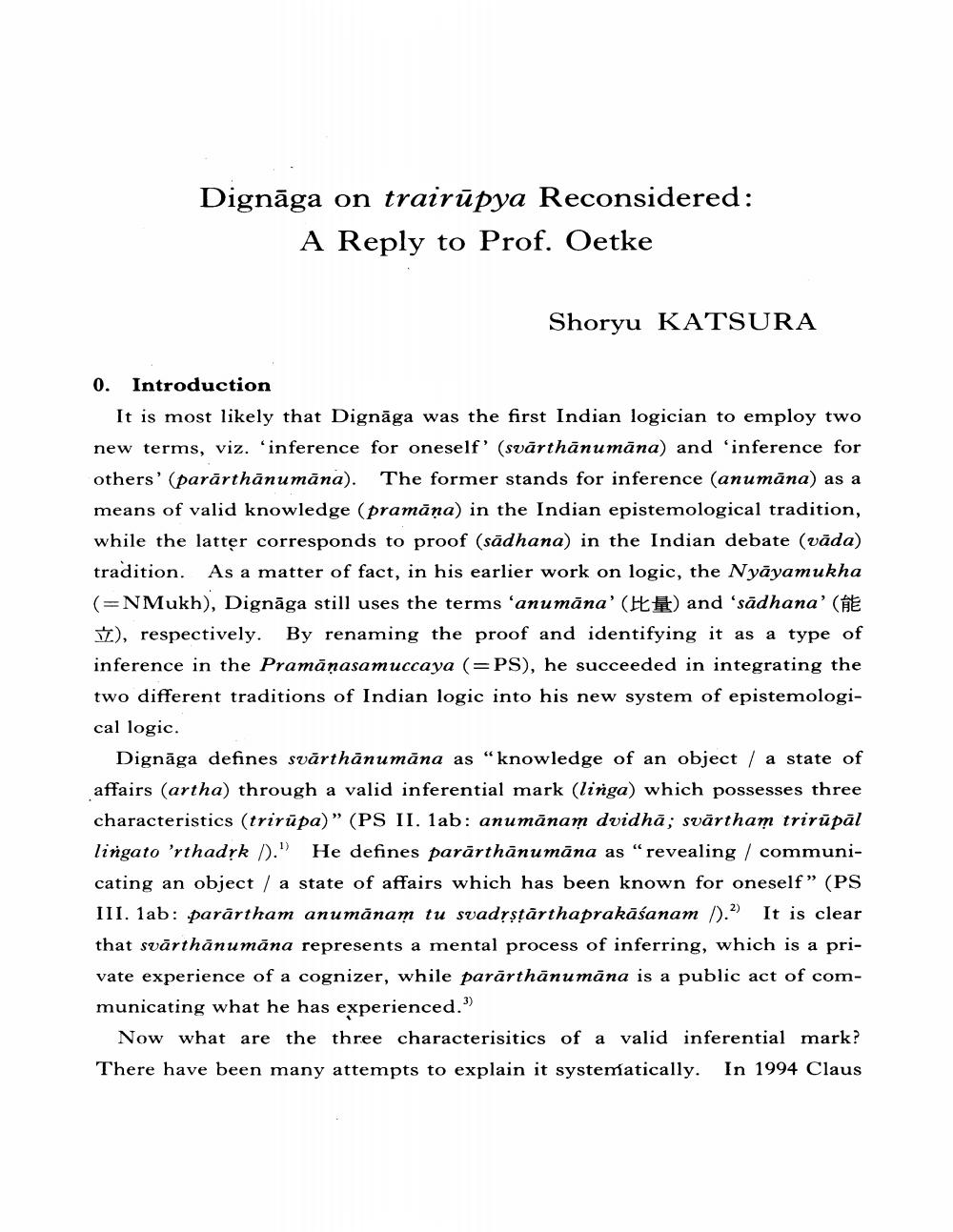Book Title: Dignaga On Trairupya Reconsidered Author(s): Shoryu Katsura Publisher: Shoryu Katsura View full book textPage 1
________________ Dignāga on trairūpya Reconsidered: A Reply to Prof. Oetke Shoryu KATSURA 0. Introduction It is most likely that Dignāga was the first Indian logician to employ two new terms, viz. 'inference for oneself' (svārthānumāna) and 'inference for others' (parārthānumāna). The former stands for inference (anumāna) as a means of valid knowledge (pramāņa) in the Indian epistemological tradition, while the latter corresponds to proof (sādhana) in the Indian debate (vāda) tradition. As a matter of fact, in his earlier work on logic, the Nyāyamukha (=NMukh), Dignāga still uses the terms 'anumāna' (HI) and 'sādhana' ( *), respectively. By renaming the proof and identifying it as a type of inference in the Pramāṇasamuccaya (=PS), he succeeded in integrating the two different traditions of Indian logic into his new system of epistemological logic. Dignāga defines svārthānumāna as “knowledge of an object / a state of affairs (artha) through a valid inferential mark (linga) which possesses three characteristics (trirūpa)” (PS II. 1ab: anumānam dvidhā; svārtham trirūpāl lingato 'rthadrk ). He defines parārthanumāna as “revealing / communicating an object / a state of affairs which has been known for oneself” (PS III. 1ab: parārtham anumānam tu svadrsțārthaprakāśanam /). It is clear that svārthānumāna represents a mental process of inferring, which is a private experience of a cognizer, while parārthānu māna is a public act of communicating what he has experienced.” Now what are the three characterisitics of a valid inferential mark? There have been many attempts to explain it systematically. In 1994 ClausPage Navigation
1 2 3 4 5 6 7 8 9 10 11 12 ... 26
